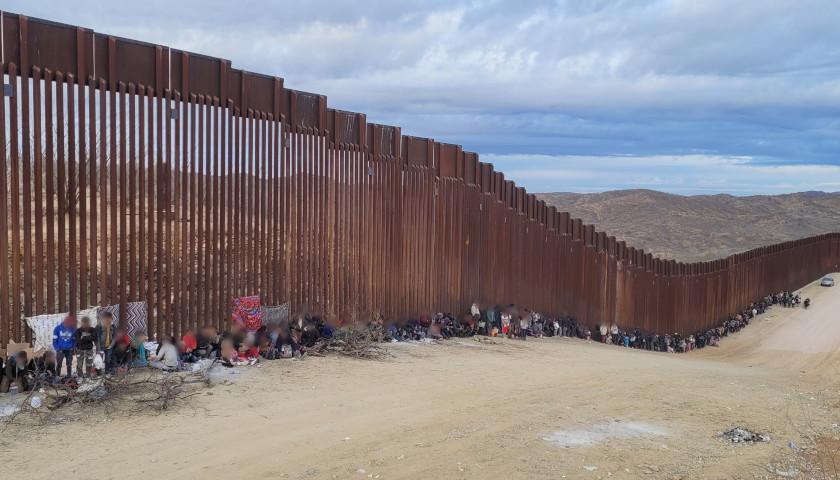by Bethany Blankley
As part of the U.S. House Committee on Homeland Security’s investigation into the “dereliction of duty” of U.S. Department of Homeland Security Secretary Alejandro Mayorkas, it and members of the House Committee on Oversight and Accountability conducted interviews with eight U.S. Border Patrol chief patrol agents and one deputy chief patrol agent.
The interviews were conducted to obtain more information about operations in their sectors as part of the committee’s ongoing investigation “into the causes, costs, and consequences of the unprecedented crisis at America’s borders, and the role of Secretary Mayorkas in facilitating and maintaining this crisis.”
On Tuesday, the Homeland Security Committee began releasing transcripts of these interviews after its chairman, Mark E. Green, MD, R-Tenn., said he planned on bringing impeachment charges against Mayorkas in January. The interviews are part of a year-long investigation that is expected to be concluded this month, ahead of hearings scheduled for next month.
This is the first report of several by The Center Square highlighting key testimony of agents interviewed between April and September 2023.
Former Del Rio Sector Chief Border Patrol Agent Jason Owens, who is now the Chief of Border Patrol, explained that illegal entries in his sector were attributed “in large part because of the message that is transmitted among the migrant population” about being released into the U.S. and not being deported.
“When you have folks that make the trip and they come across, they’re in communication with the folks that are back in their home country or their families who may also be thinking about making that journey,” he said. “And if they perceive it to be safer or more expedient, they give recommendations. And they do that by phone. They do that on social media outlets.”
He also explained that foreign nationals are communicating “the entirety of their experience to their friends and family back home, and that would include what their experience was with whatever processing pathway they were put into. … If the general perception is that it’s easy, that would logically prompt somebody to be more inclined to make that decision.”
Tucson Sector Chief Border Patrol Agent John Modlin explained information dissemination is different than in previous years.
“The way that information is disseminated now is incredibly different,” he said. “When I started my career, immigration flows took months to change, and now it seemingly can change overnight because people are live streaming themselves crossing the border. They’re sending it back to their families are seeing it. People in the area they come from see it.”
El Paso Sector Chief Border Patrol Agent Anthony “Scott” Good explained that after foreign nationals are released, they “will get on social media and say, ‘Hey, look at me, I’ve been released.’ And then that creates a draw specifically to that area. So, if it happens in El Paso and they post that on social media, that will create a draw to El Paso, same for any other sector.”
San Diego Chief Border Patrol Agent Aaron Heitke explained how many exploit the process by presenting as groups of families because there is less space to detain them, so they are often released more quickly than individuals. “When we see individuals that come across, and they have—it’s a family of five, for example, and they—it’s much more difficult to find detention or housing for a family group,” he said.
“So, for an example, they’re released on their own recognizance. Individuals come up and see that. And, if they were single adults, we do see people rent a family. So they will find somebody with children, and they will pay to take those children with them when they come to the border and say that they’re their children so that they’re more likely to be released.”
Rio Grande Valley Chief Border Patrol Agent Gloria Chavez explained “pull factors,” which is a term used to describe incentivizing illegal entry into the U.S. She said one is “families that are already in the United States pulling their relatives, you know, encouraging their relatives to come out. It would be companies or organizations that are hiring these individuals in the United States that others have told them: ‘Hey, you can get a job here type thing.’ I think it’s the feedback that people that are here already provide them to encourage them to come,” she said.
Yuma Sector Deputy Chief Border Patrol Agent Dustin Caudle explained, “social media is widely used” by illegal foreign nationals, including making TikTok videos “documenting journeys how to cross … particularly into the Yuma Sector.” The videos provided “firsthand accounts of which trails to take, where the border wall ended, which gap to exploit, you know, where to stay, all of those things.”
Using smartphones, “word travels extremely fast among migrants. It travels fast among the transnational criminal organizations, local smugglers, and the cartel.”
In response, Green said, “When there is no meaningful consequence applied to illegal activity, that activity will continue—and others will get the message that they can also engage in it with impunity. That’s exactly what has happened at our borders since Secretary Mayorkas took office. Aliens cross the border illegally, test the system, are released into the interior, and then call home to share their experiences. That’s happened millions of times in the past three years.”
He said this will not stop “so long as Secretary Mayorkas doubles down on his refusal to enforce the immigration laws passed by Congress. He must be held accountable.”
– – –
Bethany Blankley is a contributor to The Center Square.
Photo “Illegal Immigrants” by John R. Modlin.





